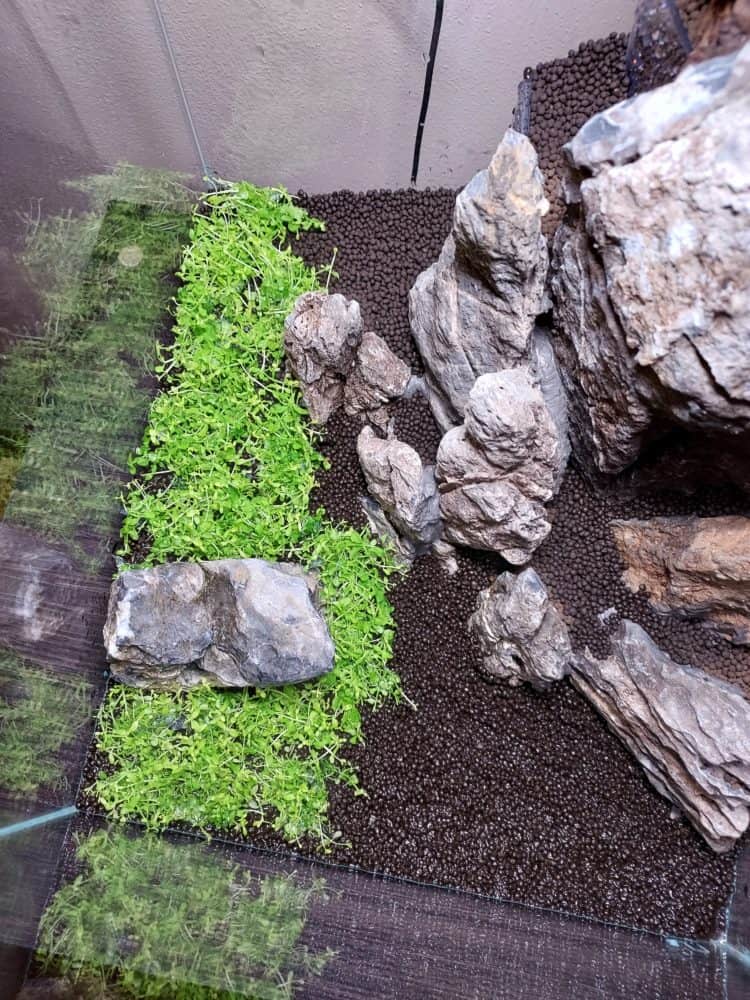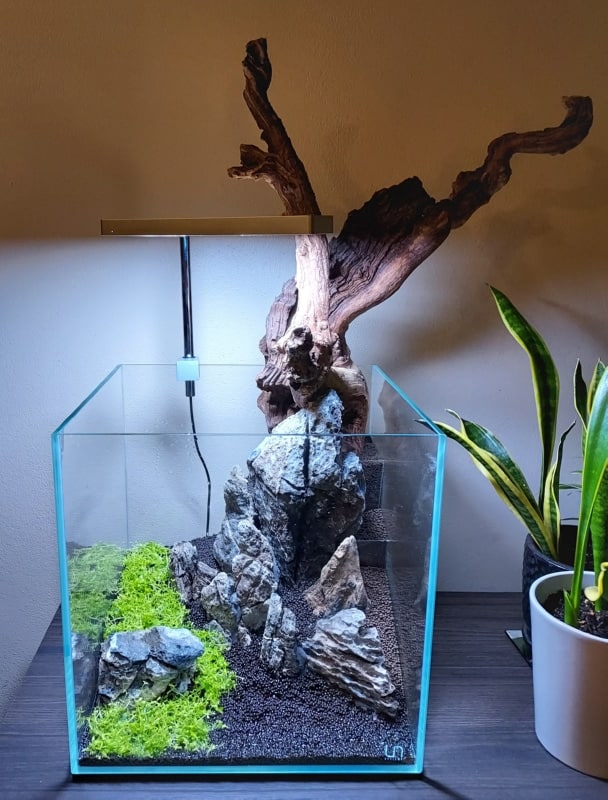PLANT SELECTION
Plants for the aquascape will be selected first and foremost for their relative hardiness and ease of care in a low tech, low maintenance environment. Most of these tend to be slower growing, which means the tank will require less regular pruning to maintain the aesthetic. Lastly a wide range of contrasting foliage types, sizes and colors will help make for a vibrantly layered 3-dimensional aquascape, and add to the perception of depth.
Specific to this unique aquascape, bias will be placed towards epiphytic and emergent plant types due to the limited “floor space” in the small cube aquarium. Approximately ⅓ of the plants in the aquascape will be grown emergent since we will be running the water level 3 to 4 inches below the top rim of the tank. Most will be attached to the Seiryu stone “mountain” and base of the driftwood branch.

Creating a rough (don’t laugh…) sketch of the layout allows for pre-planning and consideration of the amount of space to be filled and number of plant types required to achieve a densely planted result.
PLANT SPECIES
Micranthemum “Monte Carlo” UNS Tissue Culture
Anubias Nana Petite
Bucephalandra Brownie Blue
Bucephalandra Purple Blue
Bucephalandra sp. Godzilla
Java Fern Trident Mini
Cryptocoryne Wendtii Brown
Christmas Moss
Red Root Floater
Micranthemum “Monte Carlo” will form the lowest level foreground planting on the left side of the aquascape. This will create open space to help balance with the planted space, and a clear focal point for viewing through to the back to the aquarium. Light natural colored sand will be used to cover the remaining open area of soil from the center to the front right corner. Anubias Nana Petite will be attached at the base of the Seiryu stone, with varieties of Bucephalandra forming the next layer, some of which will be growing emergent. Flanking the stone on each side will be bright green Java Fern Trident Mini growing partly emergent, and lastly Cryptocoryne Wendtii Brown growing almost completely emergent at the top.
Christmas moss and Red Root Floater may be added for variety and filler as needed. We may also consider planting a hardy terrestrial plant like Pothos at the base of the driftwood branch and train it to climb along it.
DRY START METHOD (DSM)
To kick things off three Micranthemum “Monte Carlo” UNS tissue cultures were planted using the “Dry Start Method” to prevent issues with floating and sparse growth once the aquarium is filled. The Controsoil substrate was thoroughly misted with RODI water to saturate it before planting. After planting in the desired locations the Monte Carlo was misted one last time and the aquarium was covered with plastic wrap as completely as possible to hold in the humidity. The Monte Carlo will grow this way for 6 to 8 weeks with 12 hours of light per day. The plastic wrap is opened once a day to allow air exchange and the inside of the tank is misted twice daily with fresh RODI water. Excess water is removed to prevent pooling at the front of the aquarium.



By starting the foreground plants in this way you can maximize their exposure to light and CO2 right from the start without the risk of nuisance algae developing in the aquarium. The plants will quickly become well established with good roots and dense growth before the tank is filled.
Check back for the next Adventures in Nano-Scaping blog where we will cover the remaining planting of the epiphytes and emergent plants and fill the tank!


